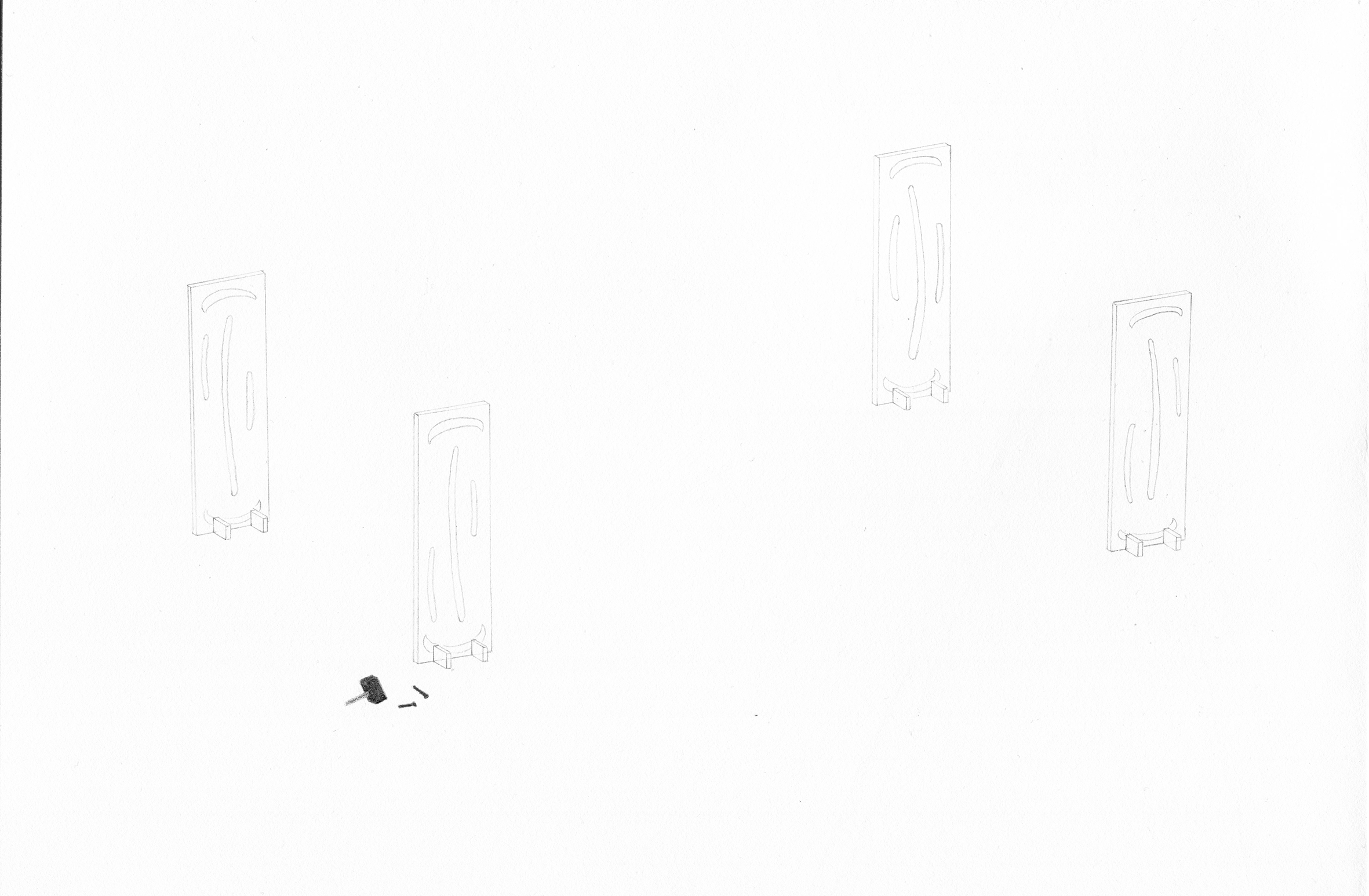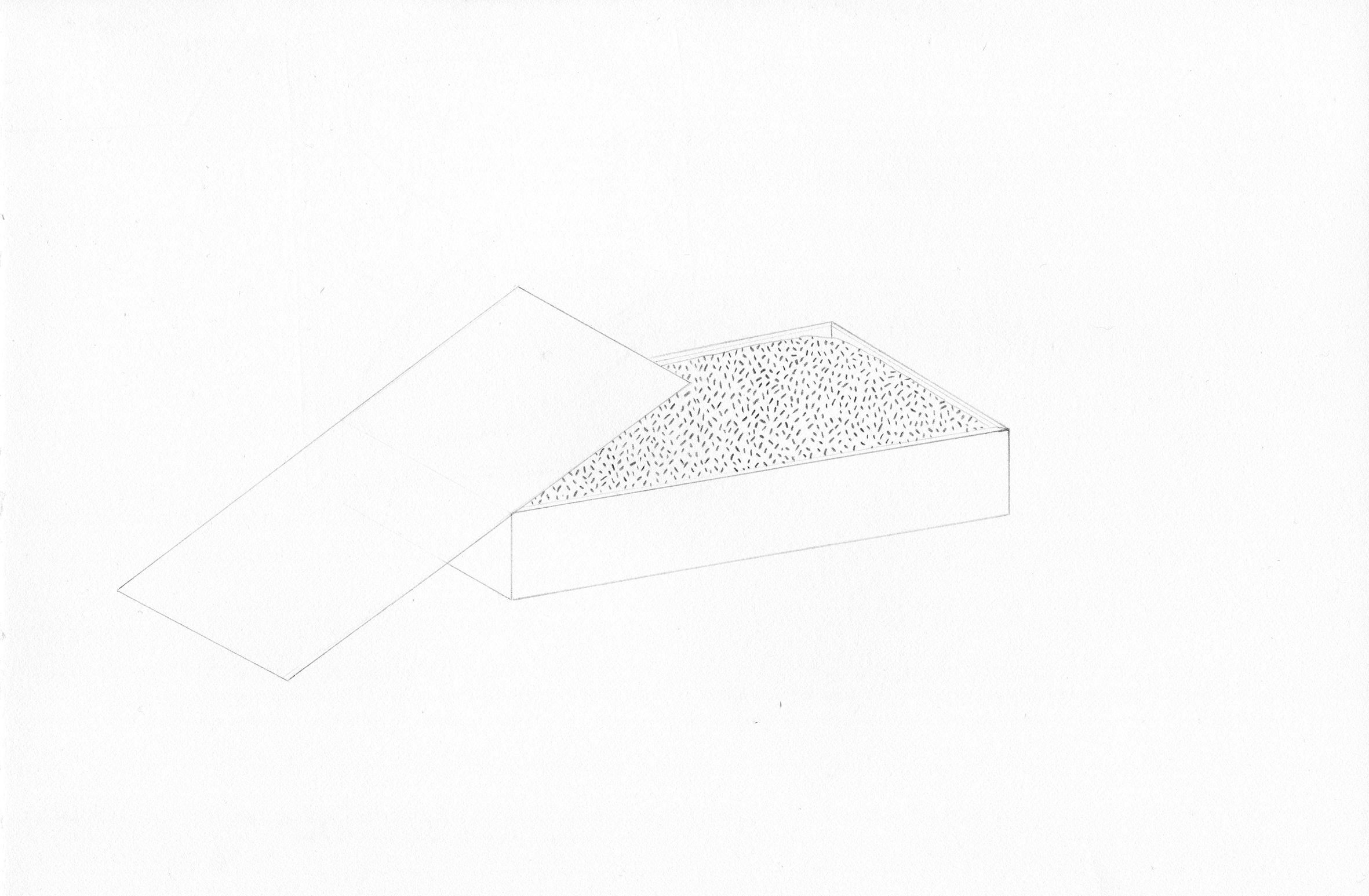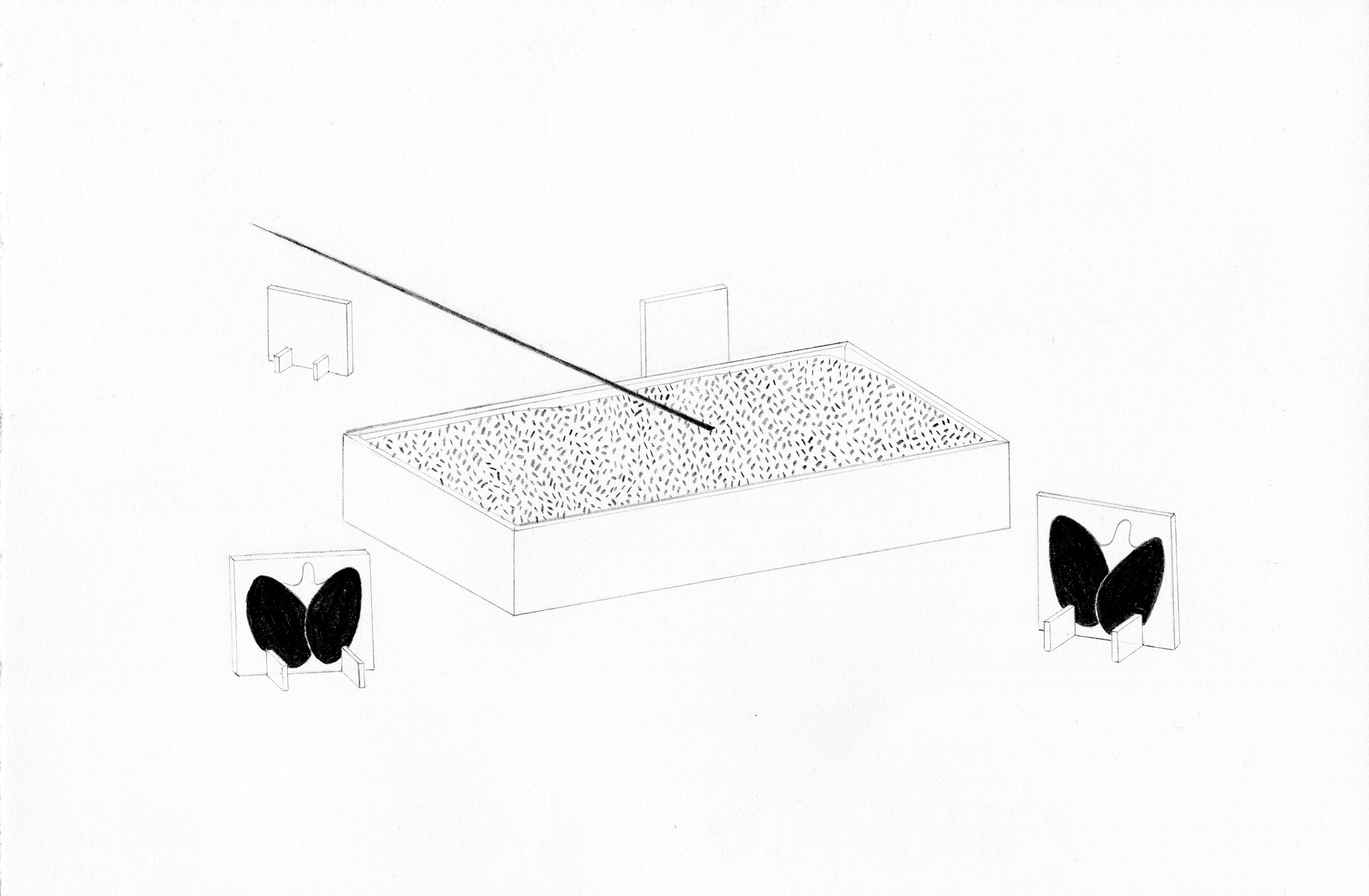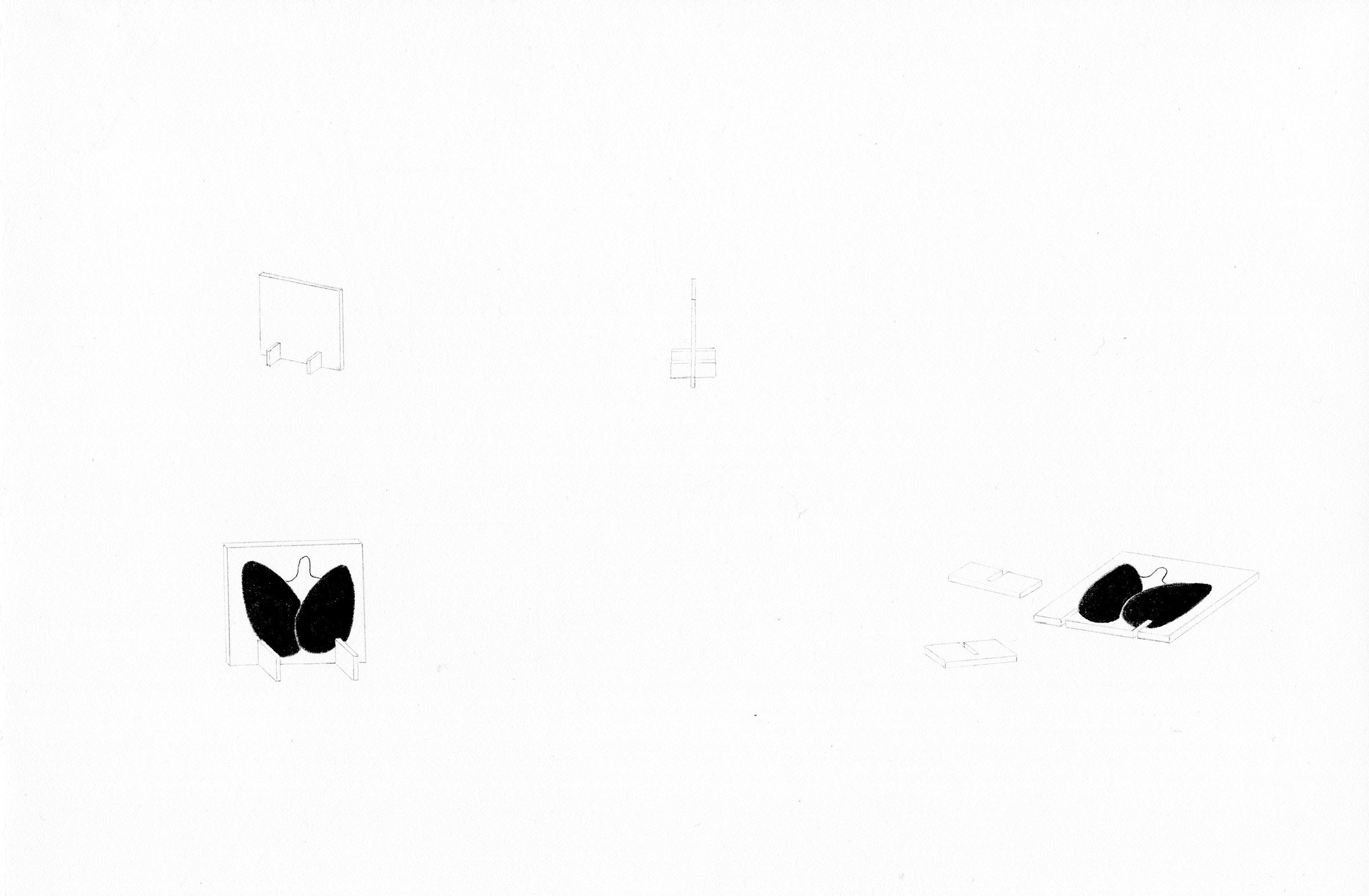
-Dr. Frances Whorrall-Campbell
These five drawings were discovered in a vat at the back of a small rural residence. Each has been produced using a similar mineral pigment on a sheet of woven paper of identical size, suggesting they form part of a portfolio or collection.

The drawings depict a sequential arrangement of various objects. There is a clear but mysterious sense of narrative progression, as the articles take on new forms and arrangements. This has been followed in the presentation here, with the drawings ordered speculatively to illustrate one narrative hypothesis. Objects arrive, are transformed, and then disappear, producing a convincing movement from conflict to resolution.
There have been suggestions that these five drawings may be part of a larger body of work. It is probable that other images like this existed, as they display a confidence in their sparse visual language that presupposes a familiar viewership. However, these five appear to stand alone, if not as an independent series, then at least as a complete set within a longer sequence. The group is bookended by two telling details which appear to initiate and close the action respectively, providing credence to this theory. The hammer and chisel (located bottom left corner) within the first drawing suggests the act of creation, and acts as a signal for the action to unfold, whilst the overturned panel (bottom right) of the final image is a kind of punctuation mark, its supine form recognising and closing the intervening action.


The style is unusually detached, even diagrammatic. Everything has been rendered in fine regular lines and with no gradation in tone: objects are reduced to simple outlines in an abstract setting. This produces an uncanny symbolism, as the props appear to be represented as drawings even within the image. The columns and flowers are two-dimensional images placed on panels, rather than being representation of ‘real’ objects. This has led to suggestions that these may be studies for objects realised in three-dimensions. This, combined with the undeniable presence of story-telling, implies a possible performative function – these works might be understood as studies for a theatrical or ritual performance.
The lack of any human-like figures presents a possible problem for this hypothesis, however there is a clear sense of objects being moved around or altered within the depicted space. The absolute meaning of these changes will likely remain a mystery, but the general arc can be interpreted as a comment on the rise and fall of civilisation. A structure appears to be raised, and then destroyed: the built world is overtaken by the natural world, before nature itself quite literally collapses.


One can only relate this to the circumstances of the planet on which these drawings were found. The cooling of the sun was slow and anticipated, and the communities which populated this planet appeared to be aware of their home’s imminent demise. In this light, the theme of these drawings becomes poignant. What might appear a cold rendering of an abstract myth suddenly becomes intensely related to a civilisation trying to come to terms with its own death.